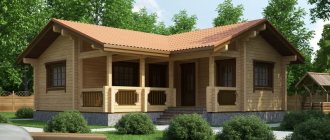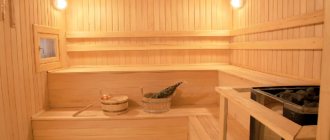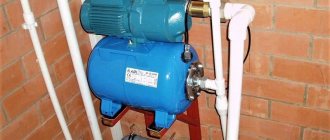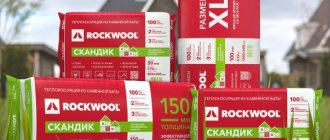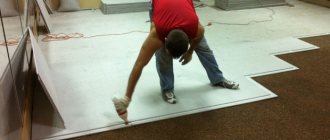Home sauna in the basement A sauna in the basement of a private house is the dream of many country home owners.
In conditions of dense buildings and lack of space on the site, the construction of a separate bath complex is often impossible. Therefore, if the house has a basement or basement, it would be very wise to place it there. You will learn from this article how to do this correctly, without harming the structure of the house, and by following all the recommendations for arranging and technically equipping a sauna.
What to pay attention to before building a bathhouse in the basement
Traditionally, baths were built as separate structures from the main house (see the link for layout options for baths made of timber). It was not in vain that they did this, since dampness inside causes many problems.
With proper design and use of modern materials, it has become possible to use a steam room within the home.
Each residential building has its own technical features. Regardless of this, there is an important rule when building a bathhouse in the basement. The subfloor of the first floor must remain dry.
The higher the ceilings in the bathhouse, the better
Before building a bathhouse in the basement of a house (see the link for the layout of a house with a basement), a number of points should be taken into account. It is necessary to study the plan of the basement, the features of its design and the specifics of the entire structure.
For example, if the house is multi-story, you will need to install a long chimney. This is technically difficult and will cost a lot of money.
It would be much more correct to move the bathhouse to the edge of the house and connect the chimney to the street through the walls.
A lot of water vapor is generated in the bath, which penetrates mineral and other materials, gradually destroying their structure. Some types of insulation suffer from moisture, losing their energy efficiency. Mold appears.
Therefore, it is necessary to design a productive room ventilation system. Ventilation gaps must be left behind the sheathing to allow moisture to evaporate.
Ventilation in the basement is not the best. There is constantly high humidity in the basement and it smells damp. Installation inside the bath complex will increase this effect many times over.
To prevent unpleasant odors in the bathhouse, ventilation is equipped with forced air movement devices.
Forced ventilation
The basement walls are the foundation for the entire house, so its destruction must not be allowed. Destructive processes begin from the same dampness. The fireproof component of the structure is important, because there will be high temperatures inside.
All combustible parts must be treated with antipyretic substances that will protect them from fire.
Advantages of a bathhouse in the basement
The listed points relate to technical shortcomings that can be overcome. What benefits does the owner receive if he builds a bathhouse inside the house?
- The most important thing is saving on building materials, especially if there is already a basement in the house. To erect even a light wooden structure, you need a foundation (programs for designing and calculating foundations are presented in the article), a frame and a roof. At the same time, the structure must be warm, otherwise it will take a lot of time to kindle. The bathhouse will cool down quickly. This will lead to big expenses. And installing a bathhouse in the basement will only require proper finishing and insulation.
Even such a small bathhouse will be expensive
- It will be possible to get into the bathhouse without going outside. For convenience, it is worth providing a separate exit to the backyard. If the basement is large, in addition to the bathhouse, you can also equip other recreational facilities, for example, a swimming pool or billiard room. There is a great temptation to create a full-fledged recreation complex.
- Installation of utility lines will not require their removal outside the main building. It will be possible to avoid digging trenches, thermal insulation of pipes and other issues. The house already has everything, so you just need to do the correct wiring.
- The most difficult thing will be with the sewer system, which cannot work if the drain is below the entry point into the septic tank or central sewer system. In this situation, you will need the pressure part of the sewer system, to which a pump is connected, lifting the drains up to the required height.
In an above-ground bathhouse, used water flows on its own due to the slope of the pipes
- And the most important advantage, if you look at the scale, is saving space on the land plot. It can be used for other needs, for example, to create a beautiful garden (the planning of a garden and vegetable garden is described in the article on our website).
If you approach the construction site competently, then no disadvantages will be able to cover up the mentioned advantages. A sauna in the basement of a private house is a profitable investment and a rational approach to the use of space.
We recommend reading: bathhouse layout options.
Steam room assembly
After determining the location of the sauna and making an individual project, they begin to assemble the steam room. According to sizes:
- vertical and horizontal bars are installed;
- all corners of the structure are checked;
- outside the frame, the walls are sheathed with sandwich panels, clapboard or plywood;
- Insulation is laid on the inside, and a vapor barrier layer is placed on it;
- all joints are carefully covered with foil tape;
- internal walls are sheathed with longitudinal or transverse slats made of non-coniferous wood;
- similar actions are performed with the ceiling;
- the floor inside is covered with ceramic tiles, on top of which a grating is installed so as not to burn your feet;
- build two shelves for a comfortable position while sitting or lying down;
- a stove (floor or wall) is installed with an enclosing structure.
When assembling the steam room, do not forget to follow the instructions
Projects of baths and saunas in the basement of a private house
How to choose heater power
It can be assumed that for every 1–1.1 m3 of bath area, 1 kW of furnace power is required. For example, a bathhouse with the following dimensions: 200 cm (width) by 200 cm (depth) by 200 cm (height). Let's calculate the volume: 2 m x 2 m x 2 m = 8 m3. We calculate the furnace power: 8 m3 divided by 1.1 m3 = 7.27 kW. Choose a more powerful stove if your sauna has a window or other additional heat outlet.
It is important not only what the sauna is made of, but also how it is equipped in the basement of the house.
The starting point is the stove, the cost of which depends on its type. If you want to save money, choose a dry sauna. You can also adjust the price of furnishing the premises using different materials. In this case, the amount depends on the type of wood, so you can choose it using the same common sense as when building the cabin itself. A sauna in the basement of a house should also be equipped with light sources - closed lamps. Look for cost-effective lighting, but don't forget about quality and safety.
Stages of construction of a bathhouse on the ground floor
A bathhouse is now a luxury item. It requires large investments. In this part of the article, the stages of construction from the selection of equipment to the finishing touches will be discussed step by step.
Bath materials
Wood helps create the right microclimate in the steam room. Even if the house is built of brick and concrete, this material is used as a finishing material.
Ceramics and metal are not suitable for Russian baths and Finnish saunas. The rooms in them are small, and the temperature reaches a high level. Personal contact with these materials may result in burns.
The boiler is protected by a wooden frame to prevent accidental touching of it
In the bathhouse they only make wood that does not rot from constant contact with water.
Conifers with a low resin content, such as cedar, are good. If resin begins to release when heated, the appearance of the finish will deteriorate.
An excellent option is larch. It only becomes stronger from exposure to moisture. Of the hardwoods, only dense ones are suitable: oak, alder, linden, birch, aspen.
Abashi, or African oak, stands out among the exotic species. This is an expensive tree, but nothing lasts better or longer than it in a bathhouse.
Budget spruce and pine cope with humidity, but they are not taken because of their resinous content. But this material is suitable for mounting a frame onto which sheathing made of expensive materials is attached.
The shelves in this bathhouse are made of abasha
Layers of insulation will be hidden behind the wooden cladding of the walls and ceiling. Mineral wool is used for baths, but they suffer greatly from getting wet, so additional layers of vapor barrier have to be laid.
Polymer materials, for example, extruded polystyrene foam, do not have this drawback, but they are fire hazardous and unsuitable for installation in a bathhouse.
It will not be possible to create a microclimate in a bathhouse on the ground floor, as in a separate building made of wood. Therefore, you will have to think about protecting adjacent structures.
Stone wool can withstand temperatures up to +1000 degrees Celsius. This is a determining factor in choosing insulation.
Thermal insulation of a bathhouse in the basement is a mandatory technological stage.
- Firstly, it will be much easier to heat the room even in winter.
- Secondly, the remaining rooms that do not need heating will be protected from the heat.
If this is not done, condensation will form on the border with unheated rooms, including in the ceiling of the first floor.
Installation of insulation with a heat-reflecting foil layer
Bath equipment
It is better to avoid a stove that runs on solid fuel. Instead, it is safer to use an industrial electric boiler. The power of the equipment is selected according to the volume of the sauna.
The efficiency of work will depend on the quality of insulation.
Electrical equipment has a high level of safety. Modern boilers are equipped with automatic shutdown devices that are triggered when short circuits occur or the permissible temperature is exceeded.
Electric wall stove for sauna
The stove is raised above the floor level by no less than 20 cm, although not all models. A fence in the form of a metal lattice is placed around the perimeter.
Electric heaters contain stones, but they are not watered with water. Instead, oils are used to infuse the air with aromas.
Electric heater in the sauna
The stones in the stove play the role of a heat accumulator - they quickly heat up and gradually release thermal energy into the surrounding space.
Only heat-resistant rocks are used that do not collapse under strong heat.
Other oven models:
Lighting equipment is also installed in the bathhouse.
Lamps must have a degree of protection of at least IP54. This means that the device is reliably protected by the outer casing from steam and water.
There are a lot of options for installing lamps in saunas. Lighting can be basic, auxiliary and decorative.
For the first and second, sconces and recessed ceiling lamps are used. For decorative lighting, LED strips and small built-in devices are used.
Dry heat sauna on the ground floor
You don't need a lot of light in the bathhouse. The environment should be relaxing and intimate. Decorative lamps illuminate benches, floors, structural elements of decoration and its most beautiful parts.
Lighting options for saunas and baths:
Other equipment includes:
- thermometers;
- hourglass to control the time of procedures;
- ventilation valves to regulate ventilation.
You can install an infrared cabin, but it will be of little use.
Basement thermal insulation
Many people insulate their baths with stone wool. You can also take glass wool, but it suffers from getting wet, and it contains more formaldehydes, which are released into the air when heated. These substances are harmful to health.
The best solution would be mineral wool on a foil base.
Basalt wool with foil layer
Aluminum foil will protect the material from steam, but a separate layer of vapor barrier is still needed, since the wooden frame and edges of the sheets remain exposed. During installation, it is easy to damage the metal layer, so its protection will be auxiliary.
The thickness of the insulation should be 10 cm, depending on the thickness of the basement walls. The basement room does not freeze like the others, since it is surrounded by earth on all sides. It is not blown by the wind.
It is recommended to thicken the layers of insulation in regions with harsh winters. A layer of 10 cm is enough to protect the rest of the room from heating.
Insulation of a bathhouse from the inside
The basement is one of the few rooms that are insulated from the inside due to being surrounded by soil. And there will be no other way out if the house has already been built.
The heat insulator is mounted to the wall, which makes it impossible to create a ventilation gap. Despite the vapor barrier, some moisture will still seep inside. If the water does not evaporate, it will gradually begin to accumulate.
Condensation can form between the wall and the insulation, which also requires an outlet. These points call into question the use of mineral wool, because over time their effectiveness will decrease.
For this reason, it is necessary to find an insulator that is not afraid of either heat or water. For example, foam glass.
Foam glass slabs
Another material with the desired properties is vermiculite boards.
Vermiculite slabs
These materials are less effective than mineral wool. But in the future they will show themselves better.
Depending on the material, the insulation is installed between the belts of wooden sheathing or under them. The second option is better, since there are no cold bridges left.
When insulating a bath with mineral wool, a heat insulator with the highest protection rates is used.
In addition to solid metal foil, these include diffusion aluminum membranes. The advantage of these materials is that steam can escape from the insulation towards the room through the main ventilation system.
Foil membrane for vapor barrier of a bath
When insulating a bath with steam and heat, the main thing is not to use polymer materials with a low melting point.
For example, the same penofol can withstand temperatures of no more than 100 degrees without damage, while only moist air in a bathhouse can reach such heating values.
Ventilation system installation
One of the most important systems for a bathhouse on the basement floor is effective forced ventilation. You will need to install fans or a deflector on the hood. This will allow:
- supply fresh air to the basement;
- eliminate fungus;
- organize the supply of cool air to the stove;
- remove couples from the premises.
Air circulation in the steam room
To prevent the bathhouse from cooling down from the outside air, it is necessary to make an adjustable supply system.
In autonomous ventilation, air moves due to the pressure difference formed as a result of heated air masses rising upward. They are replaced by cold air from the street.
If there is no influx capable of replacing the required volume of gas, ventilation does not work or works ineffectively.
The supply pipe is placed as low as possible near the stove so that the new air warms up faster. The exhaust vent is placed, on the contrary, under the ceiling. For good traction, the exhaust pipe is raised to a height.
Sewage installation
Everything about the plumbing is clear without comment. Pipes are laid to water collection points and connected to the water supply system in the house.
With sewerage everything is more complicated. The design of a bathhouse on the ground floor must include calculations for its performance, suitable equipment and other characteristics.
Sewage pumping station
The sewage system is installed so that from the drain of all plumbing to the pumping station, the waste flows by gravity.
When the buffer tank is filled, the pump starts and raises the water to a level from where it will continue to flow on its own.
Waterproofing the room
Vapor barrier, which is mounted on the walls and ceiling, will protect surfaces from water. Separately, it is worth taking care of the safety of the floor.
Depending on the floor material, the water drain is located on the surface or under the boards.
Drainer
But in any case, it is necessary that water does not penetrate into the screed. Different methods are used for this:
- when pouring a concrete bowl, hydrophobic additives are added to the concrete composition;
- the floor surface is coated with mastics and other materials;
- lay film waterproofing;
- penetrating impregnations are used.
Base waterproofing
Often these methods are combined for better results. Partially it is necessary to protect the walls. The insulation is raised to a height of 20-30 cm.
The floor in the basement bathhouse can be completely wooden. In this case, film materials are used for waterproofing.
Installation of wood trim
Before work, prepare a place for the boiler. If it does not run on combustible fuel, then only an electrical cable is laid to turn on the equipment. Otherwise there is no connection.
The bathhouse is sheathed with wooden clapboards, under which you need to install a wooden sheathing.
Assembling a bench in a bathhouse
The highest benches are tied to the walls for greater stability. For them, strong mortgages are installed before installing the sheathing. The same parts will be needed for built-in lighting equipment.
The lathing consists of parallel running belts tied to the wall. In order for air to circulate normally inside, an indentation is made at the joints of the timber.
Belts for clapboard covering
A flat plane is formed from the slats. The lining is mounted with hidden fasteners, for example, metal clamps.
Sauna equipment
An electric stove, preferably factory-made, is used as heating equipment, the power of which is calculated based on the volume of the sauna. For example, with a steam room volume of 20 cubic meters, the power of the heating stove must be at least 10 kW.
The equipment must be equipped with an automatic shutdown. It must be installed at a short distance from the floor surface - approximately 20 centimeters. For the stove, a fence is arranged around the entire perimeter so that the boards rise slightly above the stove, and the distance between them and the equipment is at least 5 centimeters.
Special stones for the sauna, which differ from each other in their characteristics and healing properties, will subsequently be placed in this space. The stones should heat up very quickly and retain heat for quite a long time, having a positive effect on the human body.
Natural stone heats up, reaching a maximum temperature, then, under the influence of water, local cooling of the rock occurs. Therefore, stones must be selected with high heat resistance, which will not crack or split.
In addition to the stove, lighting fixtures, thermometers for measuring the air temperature inside, an hourglass and ventilation valves, which are fastened with screws to the internal wooden lining, are installed in the sauna room.
For those who do not want to deal with the installation of a chimney, the construction of a heating stove with the laying of stones, we offer the installation of a ready-made infrared cabin.
Of course, it does not have a high steam temperature, and the depth of heating of the skin is also small. Infrared waves do not penetrate inside, and the skin dries out, which is not very favorable for its healthy condition.
Important. It is recommended to stay in the infrared cabin for no more than half an hour.
Don't forget to prepare material for the sauna
Interior design options for a bathhouse in the basement
Security measures
In order for a basement sauna to have the right conditions, it is necessary to maintain the appropriate relationship between temperature and humidity. This relationship describes the "right to the sum of 110". According to this formula, the sum of the temperature (in degrees C) and humidity (in percent) in the steam room should be 110 (for example, 70 degrees C and 40%).
Otherwise, placing a bathhouse in the basement is a complete plus. You can start heating a sauna without leaving your home. Residents can take a steam bath and go out to drink kvass right in the kitchen. You will save on building a free-standing bathhouse - after all, you no longer need a log house, say, somewhere on the outskirts of a summer cottage.
Installation of electrical network, plumbing fixtures
To lay the electrical network, only double-insulated copper wire is used. In particular, the insulation must not support combustion (marking NG). A panel with a general circuit breaker, circuit breakers for sockets, ventilation and lighting is mounted at the input. As a rule, the network is simultaneously connected through a residual current device (RCD). To connect an electric heater, you will need a three-phase network supply with separate circuit breakers for each phase and neutral wire.
The wire cross-section for sockets, ventilation, heater up to 2 kW, air conditioner in the rest room is at least 2.5 mm2. To connect the oven, use a cable with core cross-sections specified in the instructions. Grounding is especially necessary for the electrical network.
All sockets and switches must be located at such a distance from the steam room, font and shower that they are not exposed to splashes and water in case of damage to the pipes. To illuminate the steam room, lamps are connected via a transformer to a 12.24 or 36 V network. Lamps, for example, are placed as low as possible - it is too hot under the ceiling in the steam room. Lamps must be sealed. But at the same time, so that they are not touched by your head or hands when moving.
Plumbing fixtures are usually installed after finishing work. For a shower, it is more beautiful to use a shower stall. The pump and container for pumping wastewater are always placed in a separate room. On the other hand, it is undesirable to use the locker room and rest room as a compressor room for the water supply system pump. A strong hum when turned on can ruin your bathing experience.
Laying or installing a stove
A brick oven can only be built on a stationary foundation. The same applies to homemade thick-walled stoves with a large heater volume. In small steam rooms, you can install light industrial wood-burning stoves. If their weight does not exceed 100-110 kg (including stones), then they can be installed without a foundation. Electric stoves can also be installed without a foundation. Wood stoves are healthier, but they require firewood and you need to be able to light it. Dry firewood should be stored separately from the wet room of the bathhouse. An electric oven can be programmed to turn on at a specific time. It does not require installation of a chimney. In general, the choice of stove depends on the preferences of the owner.
For safety reasons, the floor, ceiling and wall near the stove must be covered with non-flammable material. For example, steel on a non-flammable base. However, you can line it with brick, natural stone, porcelain stoneware, and tiles. It is necessary to correctly perform a wall or ceiling passage assembly when passing a chimney through a wall or ceiling. They use steel units with mineral wool insulation. The firebox is often removed to the rest room or an adjacent room. This will make it easier to keep the steam room clean. In the relaxation room you can admire the flames in the firebox.
If a brick chimney was not installed during the construction of the house, you will have to install a new one. The best material is a three-layer sandwich pipe. Such pipes are lightweight, and they can be brought outside through the wall and fixed to the same wall. Another option is to build a foundation on the outside of the house. You can build two types of pipes on it:
- brick pipe with a stainless steel liner and insulation;
- ceramic chimney with insulation.
Beautiful examples
- An excellent bathhouse made of natural wood, which is made in a minimalist style.
- A luxurious bathhouse in a large basement, which includes a relaxation area.
- Bathhouse with a separate shower room and shower stall. The lighting inside creates a unique microclimate and allows you to relax.
- Sources used in the article:
https://stroy-banya.com/karkas/banya-pod-domom-v-podvale.html - https://stroyday.ru/stroitelstvo-doma/pridomovye-postrojki/sauna-svoimi-rukami-v-podvale.html
- https://stroypomochnik.ru/banya-v-podvale-01/
- https://o-vannoy.ru/banya/vse-o-saunah-v-podvale/
- https://PlanVsem.ru/banya/banya-v-cokolnom-etazhe.htm
- https://poparimsya.online/stroitelstvo/banya-dom/podvale-sauna.html
- https://bouw.ru/article/banya-v-podvale-chastnogo-doma
Installation of partitions
The easiest way to fence off a steam room and a dressing room is to make frame partitions from timber, insulate them and cover them with linden clapboard. To protect the wood from rotting, the lower part is slightly raised above the floor level. There are several options. You can lay a row of bricks and tile. You can mount the frame on an aluminum pipe or profile laid and fixed to the floor. If you use the bathhouse carefully and do not pour water on the floor, you can place the frame on the floor. But the insulation must be raised above the floor level! Near the stove you will have to build a small brick wall and cover it with metal.
Sewage and ventilation systems
Sewage for a bathhouse is extremely important, since this room involves a large consumption of water. According to experts, the best option is to install a pumping station. This is justified by the fact that the location of the sewer pipes is lower than the main sewage system of the house, which makes it impossible to naturally drain water into the sump.
Equally important is the installation of an effective ventilation system. In this case, we are talking about the installation of forced ventilation, which should only be done by professionals. They will not only make the necessary calculations, but also give recommendations on the choice of equipment, taking into account all the features of the room and conditions.
Finishing work
After the rough work, finishing work begins. First you need to select the material. But before finishing begins, it is better to install an acrylic liner into the structure of the bowl, which prevents the structure from leaking during use. It is important that all walls and ceilings are waterproofed. This can be achieved through the use of waterproof plaster or other means.
In addition, ventilation is provided to remove moisture from the basement. A supply and exhaust system, which has an air recovery function, will reduce the humidity level in the room to a minimum.
Once these systems are installed, the bowl can be finished. This is the final stage, the quality of which will determine the evenness of the surface and the aesthetic appearance of the pool.
Do-it-yourself pool finishing
Finishing the bottom and walls of the pool can be done in several ways. The simplest is plastering followed by painting. But such bowls are less aesthetically attractive than those decorated with ceramic or porcelain tiles. The most effective mosaic in a pool is that it provides a play of light and shadow as the water fluctuates.
There is also a finishing method such as covering the bowl cavity with PVC film. But this method has many disadvantages, including the fragility of the facing layer. In addition, covering with PVC film is only suitable for small-sized structures.
The bottom of the tank is at a depth, so a ladder will be needed to perform finishing work. The lining of the bowl begins after installing the equipment necessary for filtration. If you choose ceramic tiles or mosaic finishing, you will need: glue, tape measure, mallet. Laying of facing material is carried out with regular checking with a bubble level.
If you decide to plaster the bowl, choose cement-based compositions. Gypsum plasters are hygroscopic and are not suitable for finishing swimming pools.


